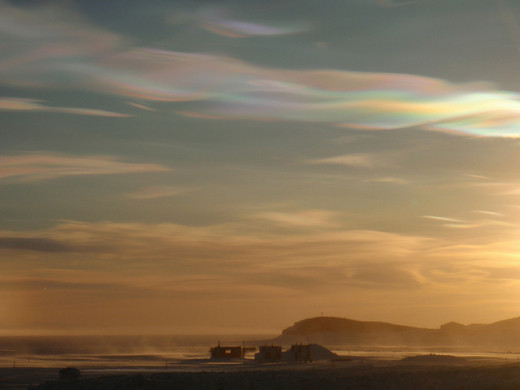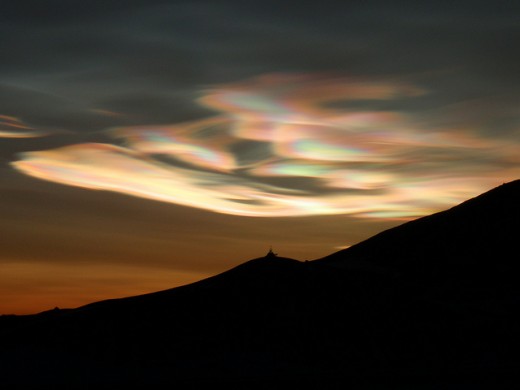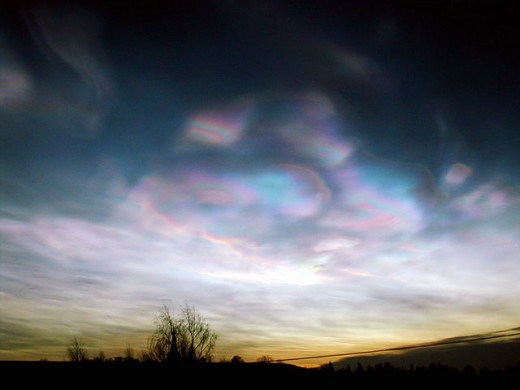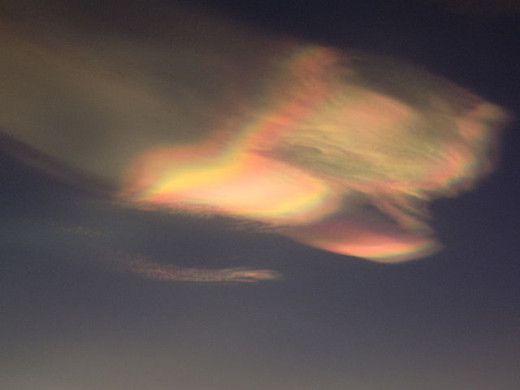A Guide to Rare Nacreous Clouds (Polar Stratospheric clouds)

Beautiful, Ethereal Clouds Eating the Ozone Layer
Nacreous clouds are also known as polar stratospheric clouds (PSCs), and can be seen in the polar countries of the northern and southern hemisphere.
These rare and beautiful clouds shimmer with colours you find in a seashell, hence their nickname "mother of pearl clouds".
Despite their beauty, the increasing frequency of nacreous clouds is worrying for scientists. You wouldn't think of such a delicate pretty looking cloud as being destructive, but that's exactly what the mother of pearl cloud is - they are helping to destroy our ozone layer.

Facts About Nacreous Clouds - How a polar stratospheric cloud is formed
-
Nacreous clouds form in the Stratosphere, between 10 and 30 miles up. The weather clouds we see everyday form in troposphere, with cirrus clouds being the highest at about 6 miles up. The next layer in our atmosphere is the stratosphere, which is separated from the troposphere by the tropopause.
The stratosphere is very different to the troposphere; it is made up of thin dry air in stable conditions. Also in contrast to the troposphere, the temperature rises from the bottom to the top in the stratosphere, which is caused by the absorption of heat from the ozone layer.
-
Nacreous clouds seen in the polar regions of the Northern and Southern hemispheres, at latitudes of 50 degrees or more.
-
Nacreous clouds are wave clouds, and are a cousin to the lenticular clouds that form over mountains. The stratosphere is very dry and it is rare for moisture to find it's way into this layer of the atmosphere. The ice crysals that form nacreous clouds are pushed up into the stratosphere by wave winds that are so strong they oscillate up through the trophosphere and into the stratosphere layer above.
-
Polar stratospheric clouds are made up of minuscule ice crystals, forming at around -85 degrees Celsius (-124 degrees Fahrenheit) Very cold indeed! They are typically seen in the winter months as the sun sets or rises and are illuminated by the suns rays from below the horizon.
-
The iridescent colours of nacreous clouds is due to the ice crystals being of a uniform shape and size and the cloud cover being thin. The sun has to be at just the right angle below the horizon to cause differaction and interference with the crystals to produce these beautiful colours.
A Quick Guide to the Ozone Layer - Nacreous clouds affect the ozone layer
What is the ozone layer? It is a delicate layer of oxygen formed naturally at about 20-30 miles (32 to 48 km) high in the stratosphere. It protects life on this planet from harmful ultraviolet light; over exposure to UV rays can lead to skin cancer for humans but would also cause other damaging affects to plants and animals. The ozone layer has been depleting in the Polar Regions (especially in the Antarctic) at about 4% a decade since it was first recorded in the 1970s.
Our modern lifestyle produces CFCs (chlorofluorocarbons), which are found in aerosols, fridges, solvents and much more besides. When CFCs are released into the atmosphere, they make their way up through to the stratosphere where they are converted by the sun's UV rays into chlorine compounds that in turn react with the ozone molecules leading to the depletion of the ozone layer.

How Nacreous Clouds Affect the Ozone Layer
Beautiful but destructive clouds
Polar stratospheric clouds provide a surface for the chlorine and bromine in the CFC's to react into an active form, even if the forms of chlorine compounds are benign. This reaction makes the chlorine become destructive to the ozone layer. Simultaneously the ice crystals also remove nitrogen which helps slow and moderate the damaging chlorine and bromine.
Nacreous clouds help accelerate the process of the depletion of the ozone layer, without the clouds there is little or no damage.
Nacreous Cloud Spotted! 9 December 2012 - Aberdeenshire, Scotland
Many people visited this page after spotting an amazing nacreous cloud in Aberdeenshire on 9th December 2012, thank you to all of you who commented below. The photo of this beautiful cloud is shown below, courtesy of Thincat, via Wikimedia Commons




